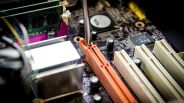
In 2024, many of us are aware of how our data is being collected and used. The data brokering industry is currently sitting at an evaluation of around $252 billion, and that's only expected to double before the end of 2030.
This is, of course, a big issue that everyone who uses the internet has to face. Even just a few minutes of internet time can leave a digital footprint that brokers can harness, analyse, and then use to form a digital profile of a person, which can be sold and exploited. This is not only an issue from a morality standpoint, but in the current age of cyber criminality, it puts all of our data at risk of cyberattacks and identity theft.
Thankfully, while the world of data brokers has been developing, so too have the means by which we can fight them. Not only is it possible to delete your personal information from the internet, but you can also actively utilise data removal tools that opt you out of data brokers, ensuring your data is kept safe both now and in the future.
The New Age of Smart Cities
With that being said, cybersecurity now goes beyond the internet. Around the globe, smart cities are becoming a reality, with many integrating advanced technologies to optimise urban living and manage resources more efficiently.
This includes traffic management, with smart traffic systems leveraging real-time data to optimise traffic flow, reduce congestion, and enhance road safety. These systems once again rely on interconnected sensors, adaptive traffic signals, and communication networks, which—although promising significant improvements in urban mobility and efficiency—introduce a variety of new cybersecurity risks.
The Risk of Smart Cities
Due to their reliance on interconnected networks and real-time data collection, smart cities and traffic management pose several problems. The first is the increased potential for damaging data breaches. Unauthorised access to sensitive personal information collected by smart city systems—including traffic data, location information, and vehicle details—could lead to cases of identity theft and potentially even financial loss for individuals implicated in the system.
If cybercriminals were to gain control over traffic management systems, too, then it could lead to the manipulation of the system to cause congestion, accidents, and disruptions to emergency services. There are already examples of V2X security attacks, for instance, which involve cybercriminals intercepting communications between vehicles and infrastructure to disrupt autonomous operations, which again can lead to accidents and collisions.
Cyber Defences in Place
Not only does the development of smart cities and traffic management put the data of individuals at risk, but it also puts their immediate road safety at risk at the same time. So what is being done to protect people?
Right now, a variety of cybersecurity defences and strategies are being implemented, including encryption—protecting data by converting it into a format that can only be read by authorised users—firewalls, IDS, and IPS—being used to monitor and control network traffic and detect malicious activities—and incident response plans—developing and testing incident response plans to identify and mitigate cyber threats.
Vulnerability management, secure software development, and security awareness training are also integral for keeping smart cities safe, with strict adherence to security policies, standards, and regulatory requirements. The development of AI and ML is also going to play a big role, with the employment of artificial intelligence algorithms to analyse a large amount of data being stored and identify any potential threats before they even occur.
Will This Be Enough to Protect Road Users?
The big question is, will this be enough to protect smart city road users? As mentioned before, it's not just your data that is put at risk in a smart city. If hackers gain control of traffic management systems, the consequences could be even more severe.
These systems are integral to maintaining the safety of urban transportation, and any disruption to traffic flow—especially caused by nefarious entities—could compromise your safety and the safety of people around you. The current cyber defences are certainly robust, and they're continually evolving, but they're not yet fully sufficient to guarantee complete protection. The cybercrime landscape is changing and growing, and the complexity and interconnected nature of smart city systems will only create more points of vulnerability.
This is not the same threat that exists online—a threat that can be dealt with through data removal tools and robust cybersecurity measures—this is a threat that will be constant in our everyday lives. Every time we get into a car, we'll be at the mercy of a system that will be unavoidably vulnerable until our cyber defences improve. With this in mind, more will have to be done before smart cities and traffic management become more common.
ⓒ 2025 TECHTIMES.com All rights reserved. Do not reproduce without permission.





